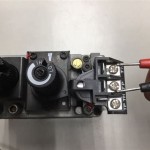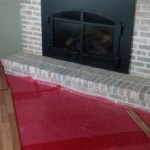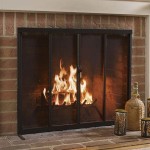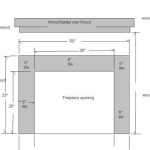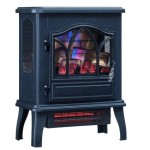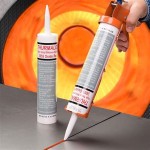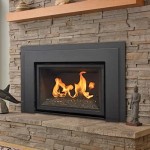Entertainment Center Around Fireplace: A Central Design Feature
The integration of an entertainment center around a fireplace presents a design challenge and an opportunity to create a visually cohesive and functional living space. The fireplace, often a focal point due to its size, architectural prominence, and inherent warmth, can be seamlessly melded with an entertainment center to provide a unified area for relaxation, entertainment, and socializing. This juxtaposition demands careful consideration of aesthetics, spatial arrangement, material selection, and functionality to achieve a harmonious and balanced environment.
Successfully integrating an entertainment center around a fireplace involves more than simply placing furniture. It's about understanding the architectural style of the home, the proportions of the room, and the individual needs and preferences of the occupants. A poorly planned arrangement can result in a cluttered and visually jarring space, while a well-executed design can elevate the entire room, turning it into a comfortable and inviting haven.
Before embarking on such a project, it is important to evaluate existing factors such as fireplace dimensions, material composition, existing wall features, and the room's overall layout. This initial assessment provides a base for determining feasibility and helps guide the design process towards a solution that is both aesthetically pleasing and practically suitable. Moreover, understanding local building codes regarding clearances and safety regulations associated with fireplaces is crucial to ensure compliance and safety.
Key Considerations for Placement and Fire Safety
The placement of the entertainment center in relation to the fireplace is paramount, impacting both aesthetics and safety. The proximity of electronic components and flammable materials to the heat source necessitates careful planning. Maintaining adequate clearance from the fireplace opening is crucial to prevent overheating and potential fire hazards. Building codes often specify minimum distances for combustible materials, including wood and certain types of synthetic materials, from the fireplace's firebox and chimney. These regulations are in place to minimize the risk of fire caused by radiant heat or stray sparks.
Consider incorporating non-combustible materials, such as stone, brick, or metal, around the fireplace to create a thermal buffer. This can provide an added layer of protection for the entertainment center and its contents. Furthermore, the use of a heat shield or mantel can deflect heat upwards and away from the entertainment center, reducing the risk of damage or ignition. Proper ventilation around electronic components is also important to prevent overheating, which can lead to malfunctions and reduced lifespan.
When planning the layout, consider the viewing angle of the television screen. Ideally, the television should be positioned at a comfortable height for viewing from the seating area, minimizing neck strain. Avoid placing the television directly above the fireplace, as the heat can damage the screen and internal components. If mounting the television above the fireplace is the only option, ensure that a substantial mantel or heat shield is in place to adequately protect it from the heat. Professional installation of the television and any associated wiring is recommended to ensure proper safety and functionality.
Finally, regularly inspect the fireplace and chimney for any signs of damage or wear. A properly maintained fireplace will operate more efficiently and safely, reducing the risk of fire hazards. Schedule annual chimney sweeps to remove creosote buildup, which is a highly flammable substance. This proactive maintenance will contribute to the overall safety and longevity of both the fireplace and the entertainment center.
Design Styles and Material Choices
The aesthetic integration of the entertainment center is as important as the safety considerations. A wide range of design styles can be adapted to suit various tastes and architectural settings. For a traditional home, a built-in entertainment center with ornate moldings and classic detailing can complement the fireplace's traditional style. Materials such as dark wood, such as mahogany or cherry, can create a sense of richness and elegance. A stone fireplace surround can be extended to incorporate the entertainment center, creating a seamless transition between the two elements.
In a more contemporary setting, a minimalist approach may be preferred. A sleek, floating entertainment center with clean lines and minimal hardware can complement a modern fireplace design. Materials such as light wood, glass, and metal can create a sense of lightness and airiness. Consider using a concrete or tiled fireplace surround to achieve a modern and industrial aesthetic. The entertainment center can be designed to blend seamlessly with the wall, creating a unified and uncluttered look.
For a rustic or farmhouse style, incorporate natural materials such as reclaimed wood and exposed brick. A custom-built entertainment center with distressed finishes and rustic hardware can complement the fireplace's natural charm. Consider using a stone or brick fireplace surround to add texture and character to the space. Accents such as wrought iron brackets and vintage-inspired accessories can further enhance the rustic feel.
Material selection plays a crucial role in the overall aesthetic and durability of the entertainment center. Solid wood offers a classic and timeless look, but it can be more expensive and require more maintenance. Wood veneers provide a more affordable alternative while still offering the appearance of solid wood. Engineered wood, such as MDF or particleboard, is a cost-effective option that is resistant to warping and cracking. Laminate finishes are durable and easy to clean, making them a practical choice for high-traffic areas.
Consider the use of contrasting materials to add visual interest. For example, a dark wood entertainment center can be paired with a light-colored stone fireplace surround. The contrast in colors and textures can create a focal point and add depth to the space. Incorporate metal accents, such as brushed nickel or stainless steel, to add a touch of modern sophistication.
Functionality and Storage Solutions
Beyond aesthetics and safety, the entertainment center should also be functional and provide adequate storage. Consider the types of media and equipment that will be housed in the entertainment center, such as televisions, sound systems, gaming consoles, and DVD players. Design the storage compartments to accommodate these items, ensuring that there is adequate ventilation to prevent overheating. Include wire management solutions to keep cables organized and out of sight.
Incorporate a combination of open shelves and closed cabinets to provide flexibility and storage options. Open shelves can be used to display decorative items, books, and media, while closed cabinets can be used to conceal clutter and store less frequently used items. Consider adding pull-out drawers or adjustable shelves to maximize storage space and make it easier to access items. A built-in media tower can provide additional storage for DVDs, Blu-rays, and CDs.
Consider the placement of electrical outlets and data ports. Ensure that there are enough outlets to power all of the electronic devices and that they are conveniently located to avoid unsightly cords. Install surge protectors to protect electronic equipment from power surges. Incorporate USB charging ports to make it easy to charge mobile devices. Hide the outlets and cords behind the entertainment center or within cabinets to maintain a clean and organized look.
Consider the incorporation of lighting. Integrated lighting, such as LED strip lights or recessed spotlights, can enhance the ambiance of the room and highlight the entertainment center's design. Dimmable lighting allows for adjustable brightness levels, creating a comfortable viewing experience. Consider adding accent lighting to showcase decorative items or artwork. Proper lighting can significantly enhance the overall functionality and aesthetic appeal of the entertainment center.
Finally, consider the long-term needs of the space. As technology evolves, the entertainment center may need to be adapted to accommodate new devices and media formats. Choose a design that is flexible and adaptable, allowing for future modifications and upgrades. Consider the possibility of adding more storage space or incorporating new features as needed. A well-designed entertainment center will not only enhance the current living space but also provide long-term functionality and enjoyment.

Custom Built In Entertainment Furniture And Cabinets With Electric Fireplaces

Built In Entertainment Center And Fireplace Around Ins Living Room

Fireplace Cabinets Built In Wall Units Bookcases Around Fireplaces

Home Decorators Collection Bramble 63 In Freestanding Electric Fireplace Tv Stand W Sliding Mesh Barn Door White Washed Walnut Top 1361fm 26 352 The Depot

107 Monte Vista White Tv Stand Electric Fireplace

Faux Stone Fireplace Entertainment Center Genstone

Diy Fireplace Surround And Built Ins Our Blessed Life

Sauder Rustic Fireplace Tv Stand For Tvs Up To 50 Vintage Oak Finish Com

Mayfair Fireplace Amish Entertainment Center Handmade Cabinfield

ᑕ❶ᑐ Tv Console With A Fireplace Vs Wall Mount
Related Posts

